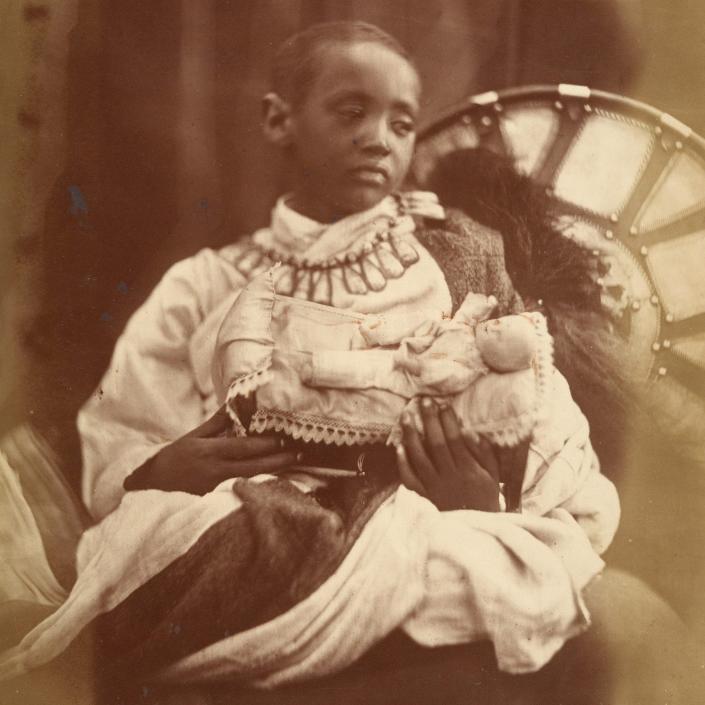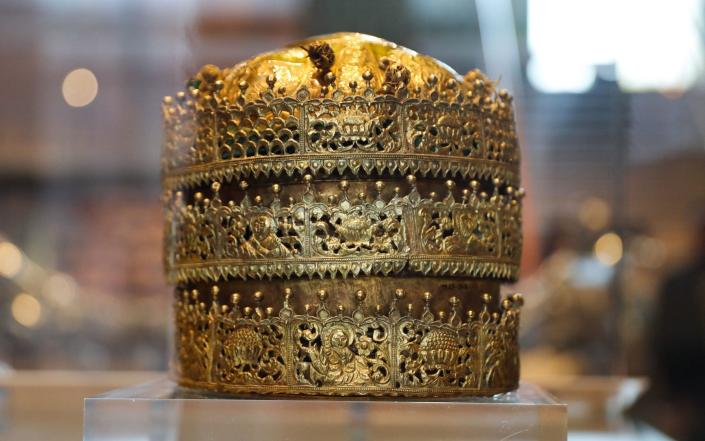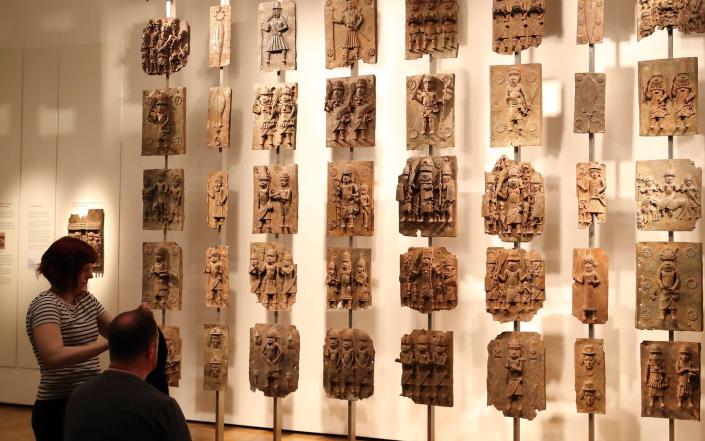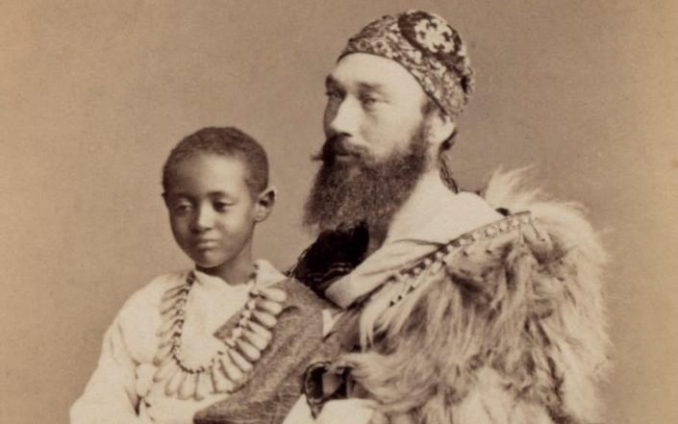
Audio By Carbonatix
For one brief moment, Victorian Britain became obsessed with Ethiopia, or as they knew it, Abyssinia. In July 1868, Prime Minister Disraeli addressed the Commons to laud “one of the most remarkable military enterprises of the century”.
That Easter, an Anglo-Indian force led by Sir Robert Napier had triumphed, with the “standard of St George… hoisted on the mountains of Rasselas”.
Disraeli tended to privilege effect over fact, and his reference to the fictional Rasselas, born of his reading of Dr Johnson’s eponymous fantasy novella of the previous century, should more accurately have referred to Maqdala, the mountain-top fortress of the King of Kings, Tewodoros II, who had indulged in a bit of empire-building himself, forcibly uniting Ethiopia, before falling foul of the overwhelming force of the foremost imperialists of the age.
Tewodoros shot himself in the face of defeat, while his young wife, Tinaresh, was to die of disease barely a month later. This left their seven-year-old son, Alamayu, the subject of Andrew Heavens’ worthy if ultimately unsatisfying biography.
It starts reasonably well, with the interesting – and thankfully well-documented – tale of Britain’s early engagement with Ethiopia, formerly a repository of fantasies inspired by tales of the Queen of Sheba and Prester John.
The story of John Bell and Walter Plowden is like a cross between Kipling’s The Man Who Would Be King and a volume of the Flashman Papers (tellingly, both Kipling and George Macdonald Fraser have a firmer handle on the nature of empire than Heavens, who is too eager to pass judgement on those “brought up in the deep prejudices of their time” – presumably our prejudices are of a shallower nature).
Bell, a British explorer who had gone native on his travels, teamed up with Plowden, the Consular Agent for Protection of British Trade in the region, and became allies of the anglophile Tewodoros, who declared that “For the love of Christ I want friendship”, when he wrote to Victoria.
Fantasy met reality when, in 1860, Plowden was captured by rebels opposing Tewodoros and died of his wounds. In a revenge attack, Bell was also killed. Relations between Britain and Tewodoros became tense to the point when, eventually, Napier’s force was sent to take Maqdala.
Echoing the Conquistador Cortés’s capture of Tenochtitlan, Napier was aided, or at least unhindered, by regional princes who loathed the violent Tewodoros. A great deal of loot, largely bought up by the British Museum’s Richard Rivington Holmes, who accompanied the expedition – and which is helpfully listed by Heavens in the appendix – was taken back to Britain.
Much of the plunder remains scattered in the British Museum, the V&A, and other collections, as well as “mouldering away in homes stately, and not so stately”.
Alamayu – human plunder, it might be said – was taken into the care of Captain Tristram Charles Sawyer Speedy, a six-foot-six Amharic speaker, who became his “towering guardian”, as Heavens calls him. He accompanied Alamayu as he left his land for good on 11 June 1868.
Queen Victoria, seeking respite from troubles in Ireland and the 1867 Reform Act, sought out the boy – “I kissed him which he returned,” she wrote in her journal – put him up on the Isle of Wight, and insisted that he was to stay with Speedy and his new wife.
Alamayu, something of a minor celebrity, met another famous resident of the Isle, Alfred, Lord Tennyson, to whom he observed acutely: “There’s one thing I don’t like in England. We Abyssinians look angry at a man when we hate him, but you English smile at people while you are hating them. You don’t speak the truth with your faces.”

Alamayu headed to India with Speedy when the latter was appointed a District Superintendent in what is now Uttar Pradesh, and later to Penang, when the guardianship was questioned by Robert Lowe, Chancellor of the Exchequer.
Ultimately, Speedy and Alamayu would separate, as the latter entered Cheltenham College, where the boys called him “Ali”, and he did not prosper.
Heavens makes many tenuous claims; footnotes or endnotes would have been preferable to the summary of sources he offers at the book’s end. At Cheltenham, Alamayu “mastered the chief virtues of public school life – the suppression and repression of troubling emotion” – how does he know?
Heavens also suggests that Alamayu’s melancholy nature and poor performance at school was due to dyslexia – though he at least adds the caveat that “it is a risky business diagnosing anyone from the distance of 160 years, especially with no medical or other relevant expertise”. Well, quite.
The book is written in an uneasily breezy style. Readers are told to “hold tight”, that “it’s a fair cop”, and there is a lot of “perhaps” and “maybe”. And in telling rather than showing, Heavens does Alamayu a disservice. His tragic tale needs neither elaboration nor anachronistic moralising.
After embarking on a failed military career, Alamayu died aged just 18 in November 1879. In Leeds, where he was being tutored in another desperate attempt to catch up with his education, he caught a violent cold that turned into pneumonia.
He did, however, receive a royal funeral at the behest of Victoria, and was buried in the west end of St George’s Chapel, Windsor. There are those who wish to see the remains of Alamayu, who lived most of his life in Britain, returned to Ethiopia.

Restitution, of bodies and objects, is at the heart of Adam Kuper’s exploration of the history and current controversies surrounding anthropological and ethnographical collections.
Most of this somewhat disjointed study is a competent, intermittently engaging, if somewhat laboured tale of the evolution of these now endangered disciplines and the institutions created for their exposition: the British Museum and its Museum of Mankind, Oxford’s Pitt Rivers, the Smithsonian, and the like.
Yet the book comes alive in its final third, when Kuper confronts the consequences for museums of the current obsession with identity politics – ironically, an import from the culturally colonising United States, to whose fads, pieties and loose relationship with facts Anglophone countries are especially susceptible.
In Britain, the Pitt Rivers has been at the heart of this controversy, and Kuper’s account of its administrators’ current contortions would be laugh-out-loud funny, if it didn’t also endorse a world view – as Kuper points out – that is indistinguishable from Donald Trump’s indulgence of “alternative facts”.
Astonishingly, its current director, Laura van Broekhoven, invited a Masaii shaman, Lemaron ole Parit, to divine the circumstances in which certain objects of the collection came into the museum’s keeping. While sitting on the floor of the director’s office, Mr ole Parit breathed into an enkidong vessel packed with stones and snuff tobacco (surely of concern to health and safety).
Using his “mystical powers” – presumably, more effective than scholarship – he then chose five artefacts to be “returned” to a Tanzanian institution yet to be designated. Such are the rigorous standards adhered to by the modern – or, more accurately, postmodern – curator. Kuper’s account of similar happenings at institutions such as the National Museum of the American Indian are even more surreal.
Few outside the loopier margins of academia would disagree with Kuper’s contention that “shamans are not a good substitute for curators”. Yet curators are unlikely to prosper in such strange cultural climes: “The insistence on the privileged knowledge of insiders… may require the silencing of the scholarly expertise.”

Some scholars are more robust in the face of dubious claims. According to Nicholas Thomas, the refreshingly rational director of Cambridge University’s Museum of Archaeology and Anthropology, “the bulk of what is in anthropological collections was obtained through purchase or exchange” rather than plunder.
Yet even the restitution of genuine loot raises complex questions concerning ownership. One example is the Qurata Rezoo, plundered by Richard Rivington Holmes after the Abyssinian expedition, not for the British Museum but for his own private collection.
Ironically, this image of Christ, which had become the most sacred icon of the Ethiopian people after its mysterious arrival in the 16th century, is the work of a European Renaissance Master, probably Flemish. In 1744, it had been captured by Sudanese Muslims, and its return to Ethiopia 20 or so years later was greeted with unbridled joy.
Holmes’s widow sold it via Christie’s in 1911, and it has since entered the collection of the Portuguese art historian Luiz Reis Santos. This work, of Flemish origin, of Portuguese ownership, and sacred to Ethiopians, has not been seen since 1998. Its fate currently rests in the hands of the Portuguese Ministry of Culture.
Kuper cites the more famous example of the Benin Bronzes, taken by British forces in 1897. The city-state of Benin was located in what is now Nigeria, though, as the philosopher Kwame Anthony Appiah writes, “One thing we know for sure is they [their creators] didn’t make them for Nigeria.”
Nevertheless, Nigeria has been promised the return of 39 bronzes held by the Smithsonian Museum, among others. Yet Nigeria’s National Commission for Museums and Monuments is currently unable to display the 500 already in their collection. And would it be worth it, given that the National Museum in Lagos receives an average of 30 visitors a day?
Kuper is adamant that, ultimately, “the local cannot be curtained off from the global”, and he ends with a plea for the “Cosmopolitan Museum”, which sounds suspiciously like the British Museum, the Smithsonian, et al. A space, backed by research, that “transcends ethnic and national identities, makes comparisons, draws out connections, tracks exchanges across political frontiers, challenges boundaries”.
The alternative, as Kuper argues, with courage and conviction, is a solipsism that “appeals to mystical insight”, or the “authority of identity” – a deadening, dictatorial and incurious space where objective truth and fact count for nothing.
The Prince and the Plunder is published by The History Press at £22.99. To order your copy for £19.99 call 0844 871 1514 or visit Telegraph Books
The Museum of Other People is published by Profile at £25. To order your copy for £19.99 call 0844 871 1514 or visit Telegraph Books
Latest Stories
-
Police arrest suspect for unlawful possession and attempted sale of firearm
1 hour -
3 arrested in connection with Tema robberies
1 hour -
Your mouth on weed is nothing to smile about
1 hour -
25% university fees hike, what was the plan all along? — Kristy Sakyi queries
3 hours -
Some OMCs reduce fuel prices; petrol going for GH¢10.86, diesel GH¢11.96
3 hours -
Trump says health is ‘perfect’ amid ageing concerns
4 hours -
China’s BYD set to overtake Tesla as world’s top EV seller
4 hours -
Joy FM’s iconic 90’s Jam returns tonight: Bigger, better, and packed with nostalgia
4 hours -
Uproar as UG fees skyrocket by over 25% for 2025/2026 academic year
6 hours -
Japan PM joins fight for more female toilets in parliament
6 hours -
Ga Mantse declares war on fishing industry child labour
7 hours -
Adom FM’s ‘Strictly Highlife’ lights up La Palm with rhythm and nostalgia in unforgettable experience
8 hours -
OMCs slash fuel prices as cedi gains
9 hours -
Around 40 dead in Swiss ski resort bar fire, police say
10 hours -
AFCON 2025: Aubameyang and Nsue make history among oldest goalscorers
11 hours

